A key piece of kit you will need for your hiking adventures is a good solid pair of hiking boots or trail shoes so knowing how to choose hiking boots or trail shoes that are right for you is crucial. As with Hiking Jackets, there are so many quality options these days that it is worth taking some time to consider what you will be using your trusty hiking boots or trail shoes for.
If you want to skip straight to our top hiking boot recommendations, you can find the best men's hiking boots listed here, and the best women's hiking boots here listed here. There we compare some of the top hiking boots available on the market today.
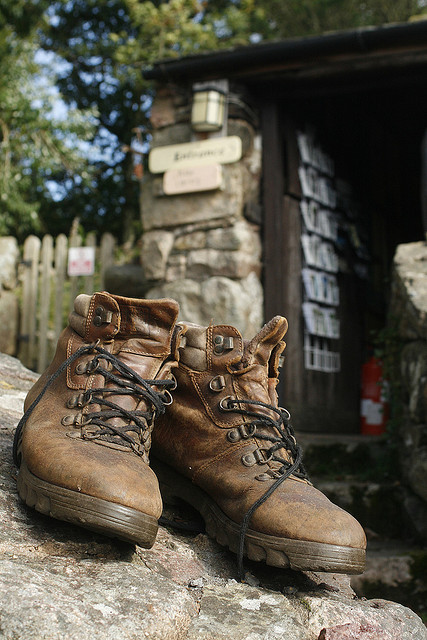
Read through the sections below and then watch the video. After that you'll have a good understanding of all the many things you should consider before choosing a pair of hiking boots or trail shoes that are just right for you. Let’s get to it!
What are my Requirements?
OK, this is probably the most important thing you need to get very clear on first. What do you need your hiking boots or trail shoes for? Do you need a pair of shoes or boots for walking your dog on a short hike at the weekend? do you plan to go off trail over very mountainous and rocky terrain? Do you plan to do long distances but always on very clear trails?
Knowing what your needs are, is really important to help ensure you get the right type of boot or shoe for your needs. Otherwise you'll either end with a boot or shoe that doesn't do what you need it to do, or, which is probably more common, far too much boot than you actually need.
In the sections below I take a closer look at the key areas I think you need to consider when helping decide what kind of boots or shoes you may need.
Terrain
OK, so where are you going to be hiking? What kind of terrain will you be hiking in? Is it the quiet walk on well-established trails option or are you planning to ascend steeper faces with loose rocks and ice all over the place? Will you be hopping into marshy bog land and even crossing rivers or does the thought of that all sound a bit too much?

This is important so again, take a bit of time and think about where you plan to be hiking and what the boots or shoes need to be able to withstand!
Climate and Weather
The type of weather you will mostly be hiking in, is of course important. If you are in warmer and drier climates, and if the terrain is agreeable, a hiking shoe may be a more comfortable option as opposed to a boot. We look at that in a bit more detail below.
If however you will be walking in deep winter snow or that type of thing, boots are of course the better option. As with Terrain, the extra support that boots will provide in tougher weather like snow and ice, is the wiser choice.

In short, get clear on what terrain you will you be walking on, in and across, and consider what challenges may arise from the climate across the year.
For more challenging and dangerous terrain, the additional support of hiking boots will be your best bet. This is very important so again, take a bit of time and think about where you plan to be hiking and what your boots or shoes need to be able to cope with.
Weight
It goes without saying that a pair of hiking boots will be heavier than a pair of trail shoes. There can also be significant weight differences between different models of boots, for example, one made mostly from leather and one made mostly from synthetic materials. This comes into play more for folks who intend to go out on longer treks and hikes.
If you’re out for longer periods, weeks or even months, the assumption could be that you will be carrying a backpack with you. With this factored into the equation, the sturdier support of boots will be much better.
For the day tripper, this is of course not as relevant so if the other factors like terrain and climate fall into place, trail shoes or a mid type hiking boot will be lighter and so could provide easier mobility.
Hiking Boots or Trail Shoes?
As mentioned above, hiking boots offer the wearer more support than shoes and so it follows that if you will be in environments where harsher terrain may be more commonplace, it’s best to look at boots with good ankle support.
The downside to this is that for this added ankle protection, the weight on your feet will go up which can cause other issues.
It’s worth noting here that there are many different styles and cuts of hiking boots from ones that suit the light to medium hiker to ones that meet the needs of the full on backpacker.
On the opposite side of the coin, trail shoes are lighter and more flexible and will offer a wider range of movement for your feet. They will normally wear out faster than boots though. this is wear it can get a bit confusing for folks as there are so many different options to choose from, it can be hard to know which one you should go for.
Let's look at some of the main categories of shoes and boots to get a clearer idea of what I am referring to.
Hiking Shoes (AKA Trail Shoes)
This seems like the most logical place to start to work our way up. Trail shoes are the lightest and probably the most flexible option, in terms of the out-sole, available. They are great for day hiking on well marked trails carrying either no pack, or a lightweight one.
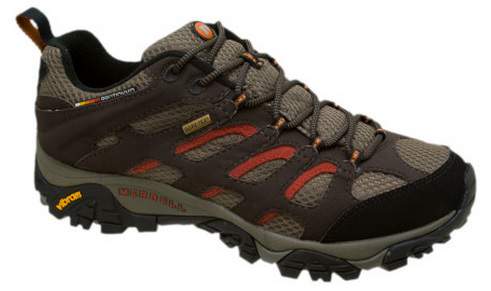
What you gain in terms of weight saving, you do lose in terms of support and stability as they lack the support a pair of hiking boots will give you. Another thing to consider is the weather. If you hike in a warm and sunny climate, trail shoes will be that bit more breathable than shoes, first and foremost as there is less of a shoe covering your feet.
If you're planning on doing longer day hikes over uneven and rough terrain, you probably want to be looking at hiking boots as opposed to trail shoes but they are a fine option.
Hiking Boots
Hiking boots are probably the main category that most hikers will be using on a regular basis. There are many variations within the hiking boot category. For example, a mid-cut model as opposed to a higher cut model which basically means the higher cut boots go further up your ankle providing more cushioning and support.
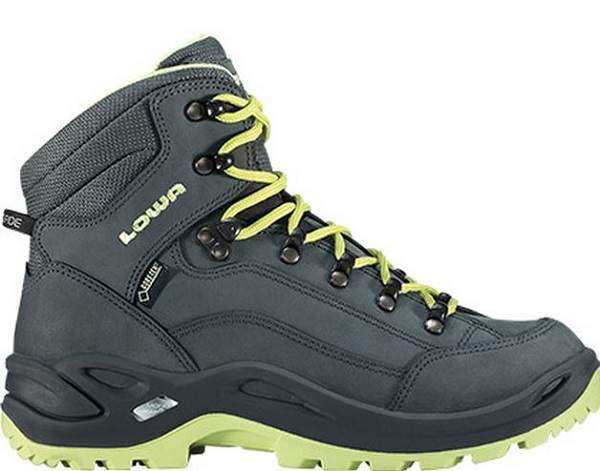
There are a whole range of other things to think about in terms of construction and build but we'll look at those in more detail in the sections below. for now, it's worth thinking of hiking boots as a category of it's own with many options within it.
Backpacking Boots
Backpacking boots are akin to hiking boots but they are built with a construction that provides support for heavy loads i.e. a backpack. Backpacking boots are generally heavier than the hiking boot category and will have much support around the ankle.
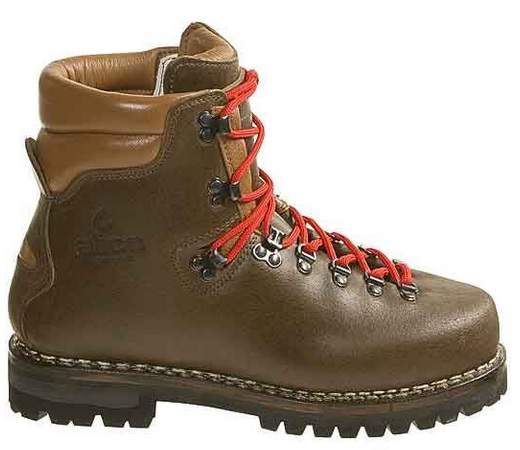
Now, it's worth noting here that backpacking boots are just fine for day hiking too. However, you will have a bit more weight to be carrying on your feet and they are usually a bit chunkier than hiking boots.
Now, this isn't a big issue if you're a backpacker who likes a day hike here and there too, your backpacking boots can double up fine. I mention this mainly from the point of view of the average day hiker. They will have little need for the extra construction of a tough backpacking boot and so there's no need to spend extra on a backpacking boot.
Mountaineering Boots
Probably out of the scope of most people reading this guide on how to choose hiking boots and trail shoes. mountaineering boots are another category that many people will not need to ever move into but there's no harm in being aware of what they are.
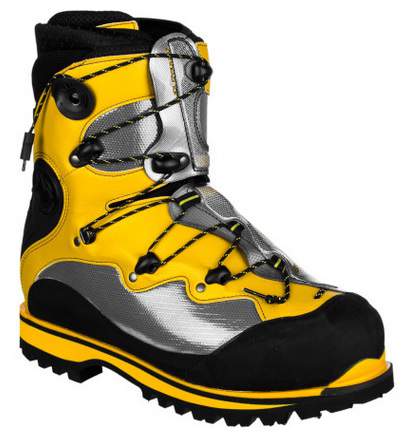
What are crampons? Well, in brief they are things you attach to your boots that enable you to walk across ice, glaciers and the like. I will likely do a post on the different types of crampons soon and will link to it from here for those interested.
For most average hikers, crampons won't be something they will regularly use. They're usually used for hiking in hard winter in icy condition or at high altitudes where glaciers and ice are part of the terrain. I had to use them when I climbed Mont Blanc for example.
The Anatomy of a Hiking Boot / Trail Shoe
It's worth taking a moment here, before continuing, to focus on the actual make-up of a hiking boot or trail shoe. That is, to help to specifically clarify some of the lingo you will come across as you search for the perfect boot.
A hiking boot is of course made up from various main constituent parts and these parts have names. Sometimes when you're reading the promotional blurb from a boot seller, it can all sound like double dutch if you don't know what the various parts are. So, let's look at the main parts before we move on to Price.
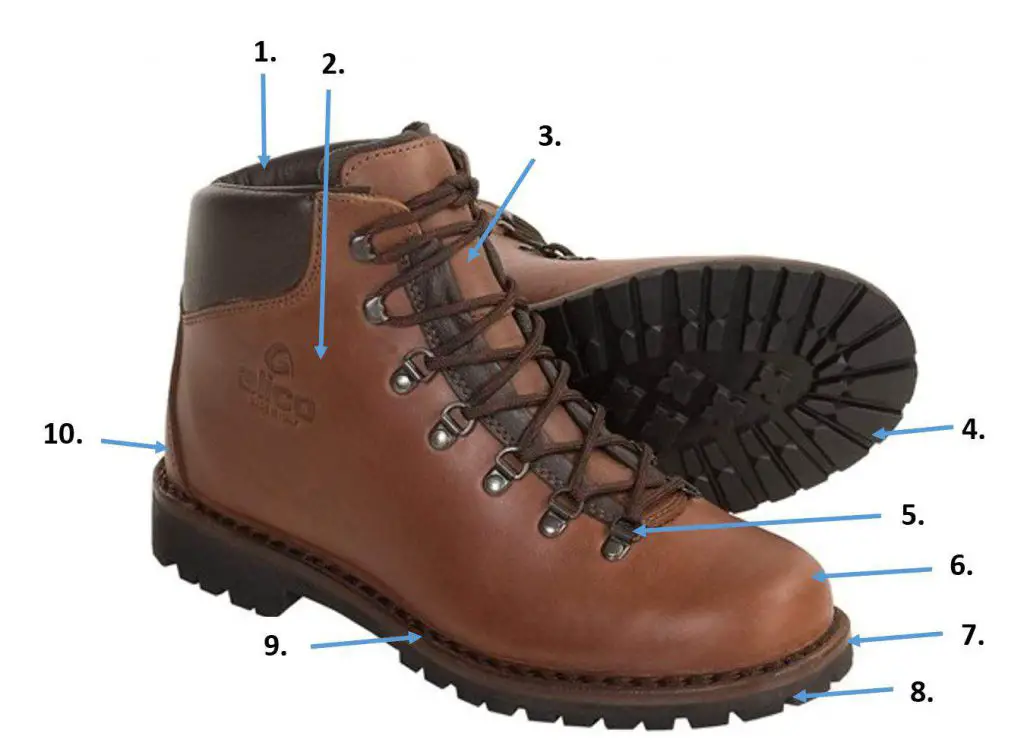
1. Scree Collar
This top collar of the boot on the inside, helps to keep scree and any unwanted debris out of your hiking boots.
2. Upper
Basically, when you hear or read someone referring to an 'upper' in a hiking boot, they are referring to the whole top part of the boot. The upper is usually made of leather, textile or a mixture of the two.
3. Tongue
The tongue of your hiking boots is the same thing as a tongue on any regular pair of boots or shoes. However, typically hiking boots will have a gusseted tongue, pictured above as the two dark leather pieces running down each side of the tongue. Again, the purpose of a gusseted tongue is to help keep debris like scree and so on from getting into your boots. It also provides a layer of cushioning around the top of your foot.
4. Lugs
When people refer to lugs they are generally referring to the lug pattern on the outsole (see 8. below) of the boot. The lugs are what makes up the pattern on the outsole and provide the mechanism for traction and grip on surfaces.
5. Lace Eyelets
Pretty straightforward, basically a lace eyelet is what your laces thread through to enable you to tie your boots up.
6. Toe Box
Hiking Boots will typically have some kind of reinforcement in the toe box area. Not exactly the same as steel toe caps in work boots but a similar principle in that the general aim is to protect your toes should anything drop onto them.
7. Midsole
This is the part of the boot that absorbs the shock and hit from the terrain. It sits between the outsole and the insole. Many times there can be more than one midsole to aid the sturdiness of the hiking boots.
8. Outsole
This one is straightforward enough. It's the outside sole of the boots. This is the part of the boot that provides grip and traction on the ground. Thicker and deeper lugs (see 4. above) provide more grip on muddy ground while thinner lugs and grip lines will provide better grip on rocky ground. You will often find a combination of the two on hiking boots.
The outsole is usually made up of some kind of rubber technology. For example, Vibram is one of the most well known technology's used for the the outsoles of hiking boots and shoes.
9. Welt
On many hiking boots you will see what looks like thick stitching on the rim of the boots where the upper connects to the sole. This is the welting. There are different types of welting. Some common ones are Norwegian, Littleway, Goodyear, Outside Stitchdown, cementing and injection molding. There could be pages written about each of these but as a general guide, Norwegian and Littleway are probably the best options for hiking boots.
10. Backstay
The back stay is a strip of leather that runs up and down the back of the boot lining to stiffen and support the boot and hold up the top, which gets the most movement.
11. Liner
Not visible in the picture above, but all hiking boots will have some kind of internal lining. Some, not all, will have a waterproof liner. Gore-tex is a good example of a lining used in boots to help with their waterproof capabilities.
12. Shank
Again, not visible in the picture above, the shank is a thin metal (usually steel) or heavy plastic strip in the sole of the hiking boots. It is used to help reinforce the wearer's arch and provides support for the bottom of the boot. A full shank goes to the toe while a 3/4 shank goes to the ball of the foot. To the best of my knowledge, hiking boots typically employ the 3/4 shank. the shank is normally glued, whipstitched, or tacked into place.
13. Foot bed / Insole
This one also isn't highlighted in the diagram above as you can't see it from the outside. It's pretty self explanatory really but worth a mention. A foot bed is effectively an insole. They provide cushioning for the base of the foot and they're usually removable in good hiking boots and trail shoes.They can also sometimes have other technological functions e.g. contain microbial protection properties aka: keeping any bad smells away 😉
Price
As with hiking jackets, there is a wide range over what you can pay for a good pair of hiking boots or trail shoes. The selection and quality of hiking boots and shoes available today, similar to jackets, can be really outstanding. Again, this will be reflected in the amount of greenbacks you will need to part with.
As a broad guide, you can spend anything from:
- Trail Shoes: They range from about $50.00 to $200.00
- Hiking Boots: Again, starting at $50.00 to $400.00
- Backpacking Boots: You probably want to be starting at $200.00 and can go up to $400.00
- Mountaineering Boots: Probably looking between $275.00 to $800.00
*Note: these are just broad range guides that are meant for illustrative purposes only. Price ranges are accurate at time of posting.
There are many factors involved in the price level not least of which is brand name which I look at in more detail below. I personally do believe in buying brand name kit as you are usually guaranteed a certain level of quality and product support via customer service.
Another option that is worth mentioning here, as an aside, is that if you really want a divine pair of boots perfectly made to the nuance of your feet, you can look to get a pair of custom made hiking boots. However, you are moving into BIG bucks territory with them, probably anywhere between $800.00 to $2000.00.
Now, these truly will be boots for life but it's not a cheap initial outlay, but they are an investment. If you have a truly unique pair of feet and you can't get a brand name pair of hiking boots to fit you, this could be the way go too. As I said, not cheap but if you can't get any comfort, it's worth considering if your budget can stretch to it.
Top Tip: Always assess your needs within a price range that is comfortable for you before starting to look and do your best to stay within those limits!!!
Material
Broadly speaking you have two choices, go leather or go synthetic. Both have their advantages and disadvantages so as long as you've taken all the other factors above into consideration, it can come down to personal taste. I know some hikers who only ever wear classic style leather hiking boots and any kind of high tech synthetic boot would just be anathema to them lol 🙂
Largely in relation to climate, you may prefer to have a breathable synthetic pair of boots. This makes sense in warmer and drier climates as getting your feet wet is not a huge deal as they will quickly dry out. In wetter, colder and more humid conditions you will likely lean more towards good waterproof and structural capabilities.
Another thing to keep in mind when looking at your boots is the sole and support of the boot. If you are going to be hiking on very rocky shale and over wet rocks, strong ankle support and good grip on the sole will be a must. As a general rule, ankle support and good grip are crucial regardless of where you're hiking.
Many times, boots will be a mix of both leather and synthetic materials, a leather upper with synthetic padding and ankle support being a common mix used for many types of boots on offer today. This is fine and can work well. Again, it depends on your needs, the primary factor in choosing boots or shoes is always 'what do I need them for?'
Brand
Again, there are oodles of great brands to choose from. If this is your first time buying a pair of hiking boots or trail shoes, it might be worth checking into some user reviews to give you an idea of other peoples experiences with different makes and models.
You can find our top recommendations for the best men's hiking boots listed here, and the best women's hiking boots here listed here. There we compare some of the top hiking boots available on the market today.
Size & Fit
Number one on the search criteria is of course picking the best sized, or should I say ‘best fit’, option for your feet. Note I say ‘best fit’ here as I have found considerable differences between a ten and eleven on different makes and models of boots and shoes.
That is, I am normally a ten but for some bizarre reason, I have had times when the ten wasn't a good fit and the eleven turned out to be the more comfortable option!
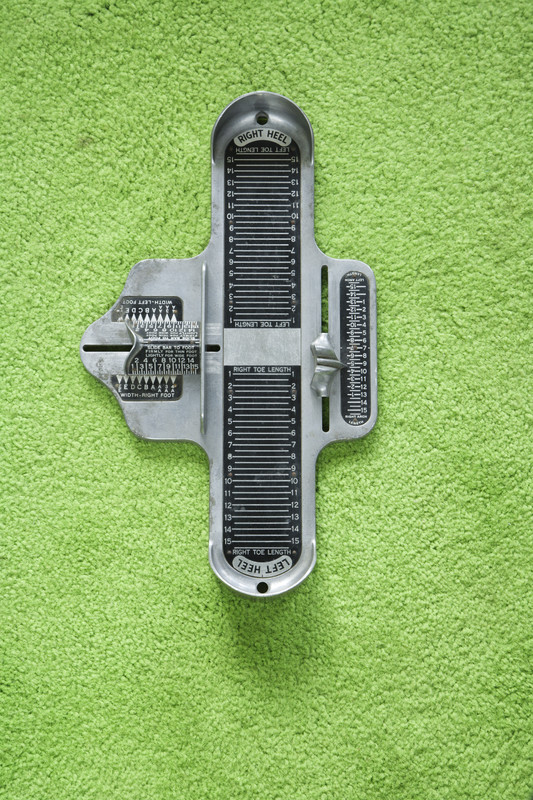
Some things to keep in mind:
- You want your foot to be held secure in the boot or shoe with wriggle room for your toes.
- The fit should be snug but not rigid.
- You need some element of flexibility to enable your foot to move a bit inside the shoe but not so much that the foot can slide back and forward.
- It is a good idea to break boot's or shoes in by using them in the house or by going out for a short walk in your neighborhood before using them for hiking.
I expanded on these points in a bit more detail in a post called finding the perfect fit which although covers broadly the same as the bullet points above, is worth a quick scan. Another thing to keep in mind is that some models of boots and shoes are better for particular feet types. For example, if you have flatter and wider feet, certain models of boots will be better suited to you than others.
The ultimate way to know is of course in trying the boots on. However, if you're buying online and doing some initial research, a good source of this type of information are user reviews. Nothing beats other folks experience and they will often refer to things like this in their personal reviews.
Top Tip: Putting on any hiking socks you plan to wear with the boots is a good idea when trying to find a good fit!
How Do I Choose?
How you choose between boots or shoes should of course be based on the answers to all the questions above. Personally, I like to have both hiking boots and shoes. I utilize them as best required by the hike or trek I plan to undertake taking into account the time of year, terrain, etc.
For example if I'm heading out on open mountain, I will always wear my boots. If however, I will be hiking along well marked trails on a hot sunny day, my trail shoes would be the preferred option.
As a side note, I also find my trail shoes very versatile and will often use them for general day-to-day use. Boots can of course be multi-purpose too but I tend to keep my hiking boots solely for hiking while I will use my trail shoes from time to time when I'm just out and about. I think trail shoes are just perfect for city breaks where sight-seeing from pillar to post is the order of the day!
Recommendation
If you're an average hiker who might dip in and out of the odd longer trek across the year, enjoys some challenging terrain, is not afraid of hiking in tough climate's and you want a good long term hiking boot that should cover your needs most of the year round, I recommend:
- A one piece heavy leather hiking boot
- With a resoling option
- With strong ankle support
A good leather hiking boot will likely cost a bit more but it is a long term investment, possibly even life long if you care for your boots properly!
For more information on helping you to choose the right hiking boot or shoe for you, check out the video from Sierra Trading Post below:
Conclusion
If you think hiking boots are the way you need to go, you can find our top recommendations for the best men's hiking boots listed here, and the best women's hiking boots here listed here. There we compare some of the top hiking boots available on the market today.
The selections linked to from there feature the best and most popular quality options available. You can be certain that your hiking needs will be met by one of those pairs of boots. Take the time to consider the questions in the sections above before going into the detailed specifications of each one.
A full review of some of the top trail shoe options will be added to the site soon so be sure to check back if you think trail shoes are what you need!
What do you look for when you're picking a pair of hiking boots? Have you any special tips for choosing a pair of hiking boots not listed above? Please share them in the comments below.